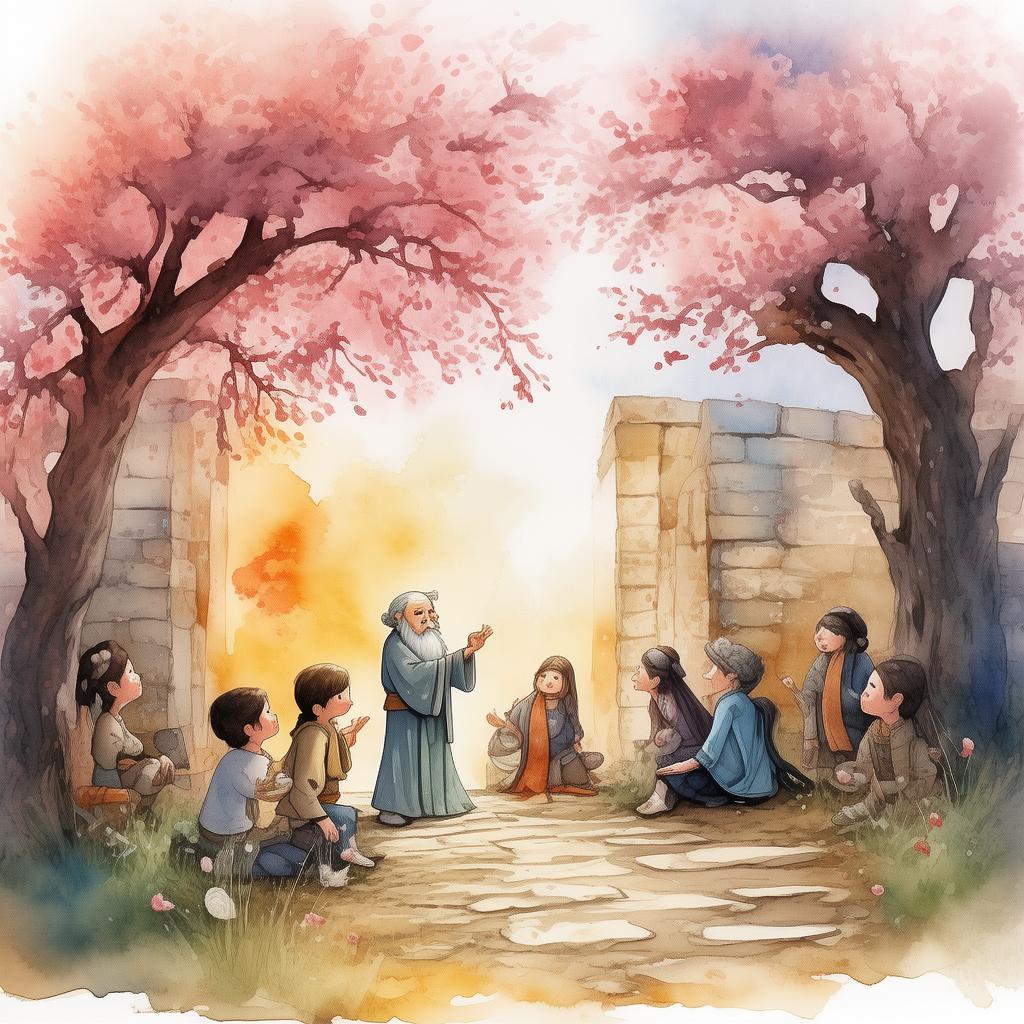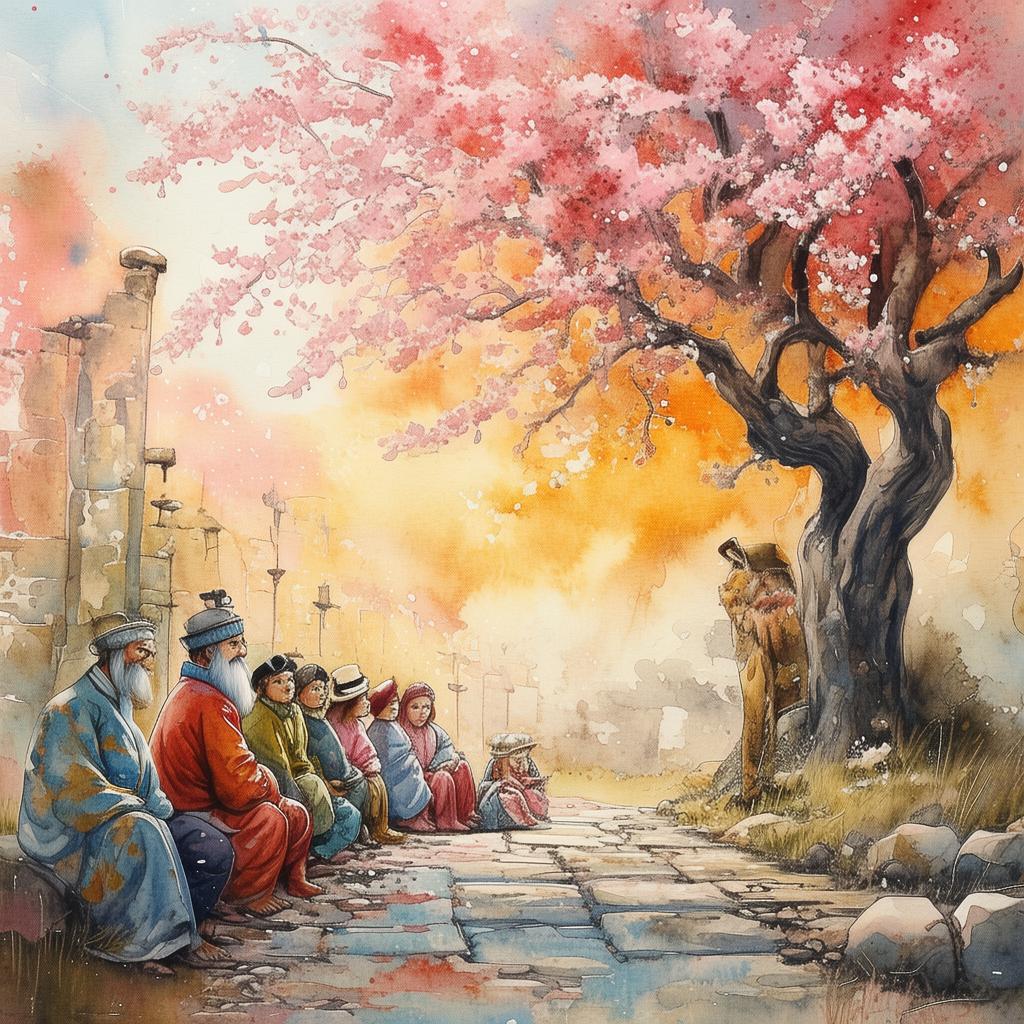Canvas of Betrayal: The Master's Dilemma
The sun dipped below the horizon, casting a golden hue over the cobblestone streets of Paris. In a dimly lit studio, the silhouette of a man was etched against the fading light. His name was Édouard, a master painter whose works were the talk of the town. His latest piece, "The Canvas of Conscience," was a testament to his talent, a portrait that seemed to breathe life into its subject.
Édouard had always prided himself on his ability to capture the essence of human emotion, but as he stood before his creation, he felt a chill run down his spine. The subject of the painting, a young woman named Isabella, had been his muse, his confidante, and his closest friend. Yet, as the brush strokes revealed her soul, a hidden truth bubbled to the surface.
The story of Isabella's life was one of tragedy and betrayal. She had been raised by a cruel father, who had sold her into a life of servitude. It was Édouard who had freed her, who had introduced her to the world of art, and who had become her protector. But now, as he gazed upon her portrait, he realized that the woman he had known was not the one he had believed her to be.
In the depths of his conscience, a question gnawed at him: had he been complicit in her father's betrayal? The painting, with its haunting eyes and sorrowful expression, seemed to whisper secrets he dared not confront. Édouard's world began to unravel as he grappled with the weight of his actions.
One evening, as the city slumbered, Édouard received a mysterious letter. It was from Isabella, and it spoke of a hidden truth that could change everything. She claimed that her father had been a victim of circumstance, and that the life she had led was not one of choice but of necessity. The letter ended with a request for Édouard to meet her at the old warehouse by the river.
Torn between his love for Isabella and his sense of justice, Édouard made the fateful decision to meet her. As he entered the warehouse, he found Isabella huddled in the corner, her eyes wide with fear. She spoke of a plan to expose her father's true intentions, a plan that would require Édouard's help.

But as they delved deeper into the conspiracy, they uncovered a web of deceit that reached far beyond their own lives. The truth was more complex than either of them had imagined, and the stakes were higher than they could have ever imagined. Édouard was forced to make a choice: would he stand by Isabella and risk everything, or would he forsake her and save his own soul?
The night stretched on, and the tension between them grew. Édouard's heart ached with the weight of his dilemma. He knew that whatever decision he made, it would change the course of his life forever. As dawn approached, he finally found the strength to confront the truth.
In a moment of clarity, Édouard realized that the painting was not just a reflection of Isabella's soul, but a mirror to his own. The betrayal he had feared was not in Isabella's actions, but in his own inability to see the truth. With a newfound sense of purpose, he vowed to use his art to tell Isabella's story, to expose the truth, and to honor the woman who had touched his life so deeply.
The following days were a whirlwind of activity. Édouard worked tirelessly, painting every detail of Isabella's life, from her childhood in the slums to her liberation by his own hands. The final piece, "The Canvas of Betrayal," was a masterpiece that captivated the public, sparking a debate about the nature of redemption and the power of art.
As the exhibition opened, the city buzzed with anticipation. Édouard stood before his creation, his heart pounding with a mix of fear and excitement. He had taken a risk, but it was a risk worth taking. Isabella had trusted him, and he would honor that trust.
The opening night was a triumph. The painting drew crowds, and the story of Isabella's life touched the hearts of many. As Édouard watched from the shadows, he felt a sense of peace wash over him. He had found his redemption, not through his art, but through the courage to face the truth.
In the end, "The Canvas of Betrayal" was more than a painting; it was a testament to the power of forgiveness and the strength of the human spirit. And as the final visitor left the gallery, Édouard knew that his journey had only just begun.
✨ Original Statement ✨
All articles published on this website (including but not limited to text, images, videos, and other content) are original or authorized for reposting and are protected by relevant laws. Without the explicit written permission of this website, no individual or organization may copy, modify, repost, or use the content for commercial purposes.
If you need to quote or cooperate, please contact this site for authorization. We reserve the right to pursue legal responsibility for any unauthorized use.
Hereby declared.









